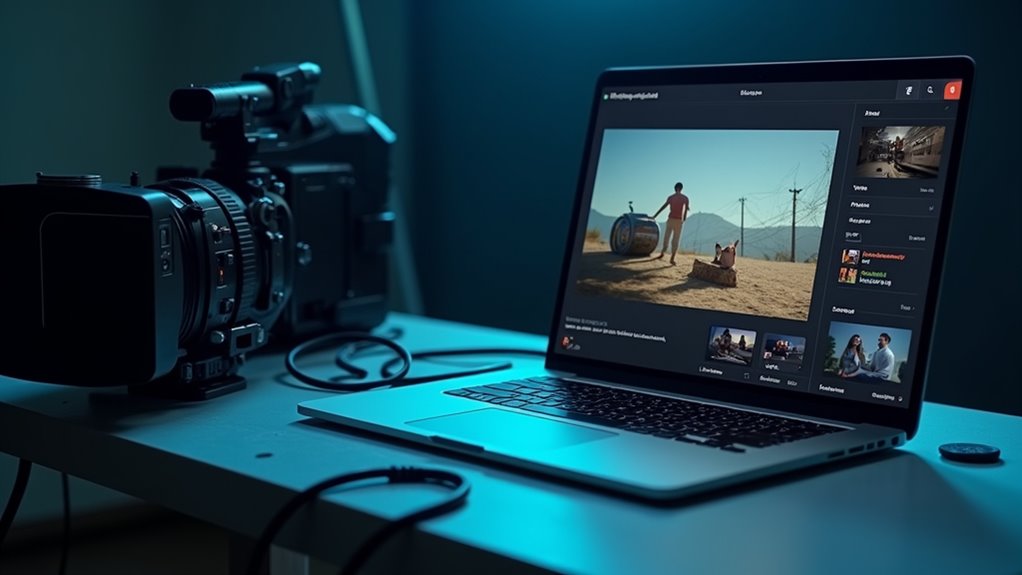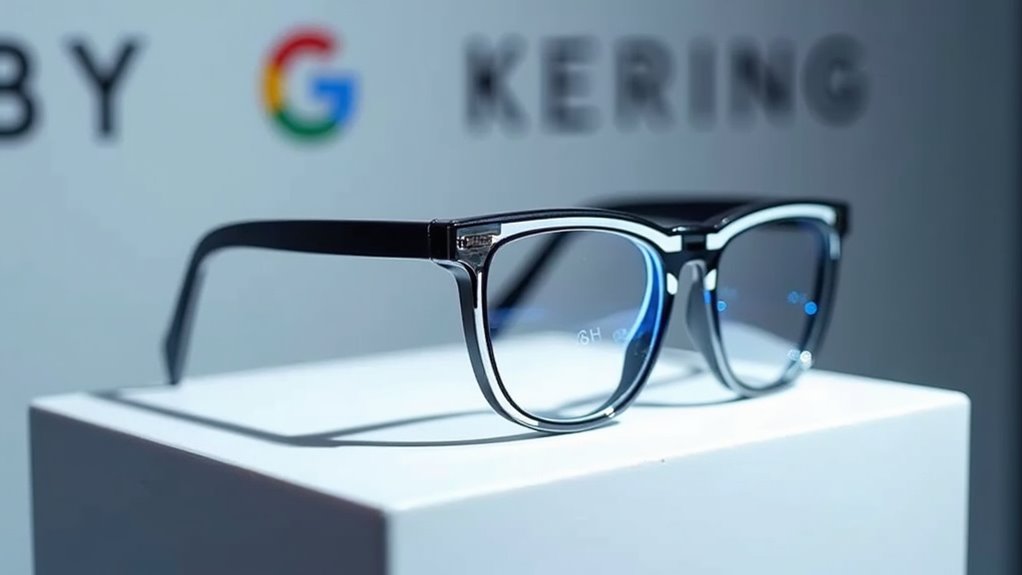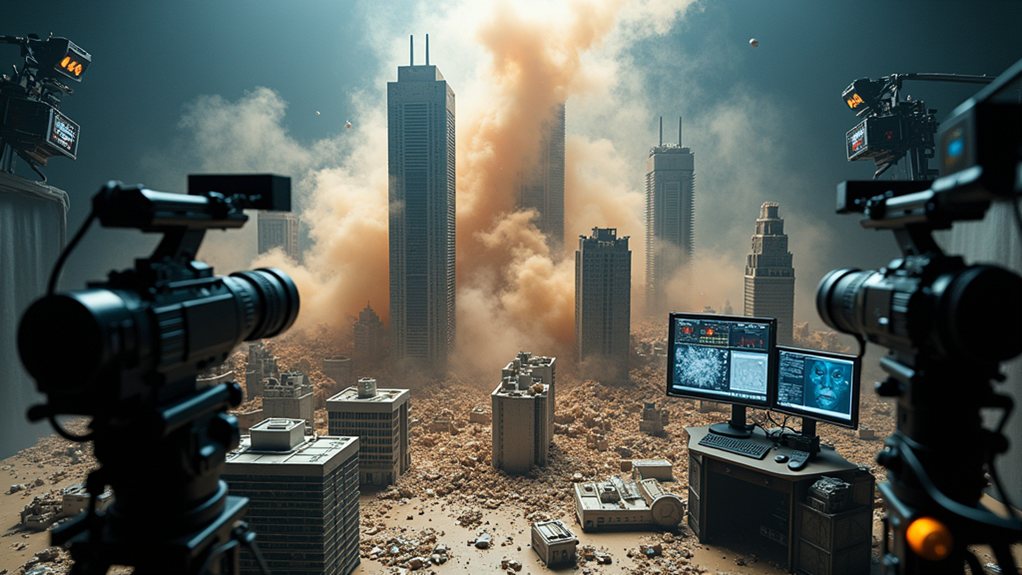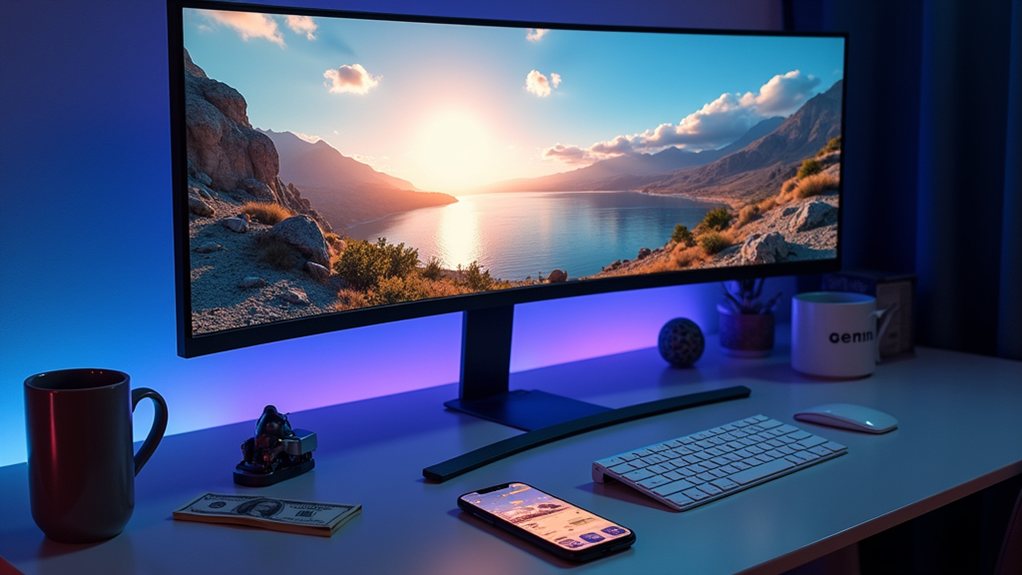Google’s Flow AI Video Tool, revealed at Google I/O 2025, is shaking up filmmaking as we understand it. This DeepMind-powered creation turns simple prompts into cinematic clips—complete with camera controls, sound effects, and physics that actually make sense. Available to US subscribers of Google AI Pro and Ultra, Flow democratizes high-end production techniques previously reserved for Hollywood budgets. The creative industry’s “prompt engineers” might soon replace traditional roles. Keep your director’s chair—you’ll need somewhere to sit while contemplating this brave new world.
While filmmakers have long wrestled with the technical complexities of bringing their visions to life, Google’s newly disclosed Flow AI video tool aims to radically simplify this process. Introduced at Google I/O 2025 on May 21, this AI-powered video creation platform integrates DeepMind’s most advanced models—Veo, Imagen, and Gemini—into what might be the creative industry’s most significant disruption since digital cameras replaced film.
Gone are the days of wrestling with complicated editing software or struggling to explain your vision to a crew. Flow lets you generate high-quality cinematic clips through simple language prompts. Want to adjust that tracking shot? Just ask. Need more dramatic lighting? Type it in. The tool’s Camera Controls feature gives users direct manipulation over motion, angles, and perspectives without touching a single physical camera.
The filmmaking revolution is here—speak your vision, and Flow brings it to life without a single camera in sight.
The technology behind Flow is genuinely impressive. Powered by Veo 3, Google’s latest video generation model, it can maintain character consistency across scenes and even generate appropriate sound effects and dialogue. The latest version incorporates real-world physics for creating more authentic and lifelike video content. Think of it as having a mini production studio inside your laptop—minus the catering bills and ego clashes.
For subscribers of Google AI Pro and Ultra plans in the US (other countries coming soon), Flow offers something revolutionary: the democratization of filmmaking techniques once reserved for those with serious budgets and technical know-how. The SceneBuilder functionality lets users seamlessly extend existing shots, while the Asset Management system organizes all your creative “ingredients” in one place. Google’s innovative Flow TV feature showcases AI-generated clips that serve as inspiration for creators exploring the platform’s capabilities. With AI projected to add 15.7 trillion dollars to the global economy by 2030, tools like Flow represent just the beginning of AI’s transformation of creative industries.
Of course, this raises questions about the future of traditional filmmaking roles. Will we soon see “Prompt Engineers” replacing cinematographers? Probably not entirely—there’s still something magical about human creativity that AI hasn’t quite captured.
What’s clear is that Flow represents Google’s serious entry into AI-assisted filmmaking, positioning itself as a tool that reduces technical barriers while expanding creative possibilities. For better or worse, the line between “I have an idea for a film” and actually making one just got dramatically thinner.









